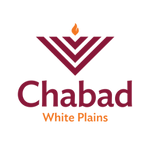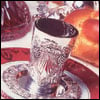So, you know you can’t cook or adjust a flame on Shabbat. But does that mean you’re stuck eating only cold food? Not necessarily!
Of course, with certain restrictions, you can leave food on the fire from before Shabbat—hello, cholent!1
But what about food that’s sitting cold in the fridge? Is there a way to warm it up on Shabbat? Let’s break it down.
The Basics: Reheating Food on Shabbat
There’s a key principle in Jewish law called ein bishul achar bishul—“there is no cooking after cooking.” In other words, once food is fully cooked, reheating it is not considered cooking.2 But there’s a catch. This rule only applies to dry foods that undergo a fundamental change through cooking. When a solid food cools down, it’s still considered cooked. So, warming up fully cooked, dry food on Shabbat isn’t considered “cooking” on a biblical level.3
Liquids are a whole different story. Since cooking does not alter their structure in the same way, once they cool down, reheating them is considered cooking all over again. According to Ashkenazic custom, a liquid is only considered “cooked” while it’s still warm (like if it’s hot enough to be enjoyed as a warm drink4). Once it cools down, the rule yesh bishul achar bishul b'davar lach—“there is cooking after cooking for liquids”—applies, so you can’t reheat a previously cooked liquid on Shabbat.5
The Sephardic custom is even stricter. The liquid has to be at least yad soledet bo (hot enough to burn, around 110°F) to still be considered cooked, in which case it can be reheated.6
But there’s another layer here.
Although reheating food is biblically permissible, the sages7 instituted that cooked food can’t be placed directly on a stove or in an oven on Shabbat because:
- It might look like you’re cooking raw food on Shabbat.
- You might be tempted to adjust the flame, which is prohibited.
Because of these concerns, you can only reheat foods on Shabbat if you follow specific guidelines. Let’s dive in.
What Foods Can Be Reheated on Shabbat?
To reheat food on Shabbat, it must meet all of these conditions:
1. Fully Cooked
The food has to be completely cooked to the extent that it won’t further soften or change its texture through additional cooking. If it’s only partially cooked, reheating it on Shabbat is biblically prohibited.8
2. Completely Dry
The food needs to be dry, with no moisture on the surface. That means if you touch a solid food and then touch your finger to another finger, that finger can’t be wet.9 If the food’s surface is more moist than this—or certainly if it contains actual liquid—you can’t heat the food on Shabbat, even if it was fully cooked before Shabbat.10
What about liquids? As mentioned, cold liquids can’t be reheated on Shabbat according to Ashkenazic custom. But if the liquid is still warm (e.g., still suitable to be drunk as a “warm drink”), it can be reheated following certain guidelines, which we’ll discuss below.11
3. Congealed Solids
Things like cold chicken fat that congeals around a piece of chicken? Tricky. According to many authorities, including the definitive ruling of Rabbi Schneur Zalman of Liadi,12 if something melts when heated, it’s treated like a liquid. So, reheating it would be considered cooking.13
Some authorities, however, are of the opinion that the congealed solid actually has the status of a dry food. Nonetheless, they say you should be strict and consider it liquid if you warm up the food in a pot or pan that was on the fire (kli rishon), or pour from a kli rishon onto the food (iruy kli rishon).14
(Note that, even according to this more lenient opinion, dissolving butter or margarine would be problematic, as it’s considered a liquid.15)
If a food, such as a noodle kugel, has only a little congealed fat, such that when melted, it remains absorbed within the food and doesn’t ooze out (or only oozes out once it’s warmed up), you can reheat the food even according to the stricter opinion.16
How to Reheat Food on Shabbat
Even if you’ve determined that your food can be reheated, you can’t just stick it on the stove or in the oven. Instead, you need to use some unconventional methods:
Pot on Top of a Pot (Kedeira Al Gav Kedeira)
You can place your food on top of (not inside) another pot.
- According to Ashkenazic custom, if the bottom pot is directly over a flame, it must contain food. The Sephardic custom is more lenient, allowing food to be placed atop an empty pot that’s on the flame.
- If there’s a blech (a flat metal sheet covering the fire), you can place food atop an empty pot according to Ashkenazic custom.17
Another option is to place an upside-down pot on a blech or electric plate, then place your food on top of it.18 But you can’t place an upside-down pot over an open flame and warm food on it.19
Near (But Not On) the Flame
If your solid food is fully cooked, you can place it near a heat source to warm it up or remove its chill.20
What about liquids? It depends on your custom, as explained above.
Restrictions:
- You can’t place uncooked food near a fire or in an area where it could reach 110°F, even if you intend to remove it before it reaches 110°F. However, if it would not reach 110°F even if it were left there, it’s OK.21
- If there’s a great need (e.g., heating milk for a baby), you can place cold liquids that require no more cooking in an area where they could reach yad soledet bo (110°F), as long as you ensure they’re removed before actually reaching that temperature. Otherwise (or if there is no great need), you can’t place liquids in that area.22
The Blech (Metal Sheet)
A blech is a metal sheet that’s placed over the fire before Shabbat, allowing you to leave food on the fire (for more on this, see here).
If you’re using a blech, there are three areas to be aware of:
- Directly over the flame: You can’t place cold food here on Shabbat.
- Near the flame (hot enough to reach yad soledet bo): Also forbidden.
- Furthest away from the flame on a very large blech (where it can’t reach yad soledet bo): Permitted.23
Rearranging pots: If a number of pots were placed on the blech before Shabbat, you can only move a pot within the areas that can reach yad soledet bo (i.e., the 1st and 2nd areas). You can’t move a pot from the edge of the blech (3rd area) to a part of the blech that can reach yad soledet bo.24 And it goes without saying that you can move a pot from a hotter area to a cooler area.
Adding Food in a Pot Taken Off the Fire
You can put fully cooked and dry food in a pot that’s been removed from the flame.25 This would include adding noodles into soup. But if the food was baked, it can only be reheated in a dry pot that was taken off the flame.26
Electric Hotplate or Warming Drawer
You can place food on an electric hotplate or warming drawer that was on from before Shabbat—as long as it has only one temperature setting (i.e., there’s no way to adjust the heat). The fact that it’s non-adjustable shows it’s meant for warming, not cooking.27
Common Questions
Can I put food into an oven that is set on “Sabbath Mode”?
No food (cooked or non-cooked) may be placed in the oven on Shabbat to reheat or cook, even on “Sabbath Mode.”
(Regardless of what manufacturers call it, Sabbath Mode only helps with certain Yom Tov (holiday) situations. It doesn’t make an oven OK to use on Shabbat. The name is actually misleading.)
How do I warm a baby’s milk bottle on Shabbat?
Pour hot water from an urn onto the milk bottle, or fill a bowl with hot water from the urn and then place the milk bottle in the bowl.28 Just make sure the bottle isn’t fully submerged to avoid the prohibition of hatmanah (fully insulating food to retain heat).29
Can I add noodles or “soup nuts” into soup?
Noodles that have been fully cooked and are now dry may be added to soup once it has been removed from the flame. Baked or fried soup nuts may only be added if the soup has been ladled from the pot into a bowl.30
Addenda: Cooking, Baking, and Frying
We noted that one may recook or rebake an item under certain circumstances. But may one cook an item that has been baked or roasted, or bake or roast an item that has been cooked?
For instance, may one add pre-roasted meat to a hot cholent?
According to some, this would be permitted. Once food has been transformed by heat—whether by cooking, baking, or roasting—further changes are of no consequence.
However, many others maintain that this would be considered a forbidden act of cooking. For this reason, it is prohibited to place baked bread into a pot of hot food even if it has been removed from the fire.31
Who to follow?
Ashkenazic custom is generally stringent, and some Sephardic authorities are lenient.32 However, many Sephardic authorities are of the opinion that, at least in the first instance, one should preferably avoid it.33
That said, even those who are stringent agree that if this had been done (e.g. soup nuts had been poured into the soup pot) it may still be eaten.34
As a practical application:
- Dipping a cookie into tea or coffee is only permitted if hot water had been poured ito one cup and then another (i.e. a kli shlishi), rendering it unable to cook the cookie.
- Dipping bread into your bowl of soup (but not the serving pot) may be permitted (see footnote 30).







Join the Discussion